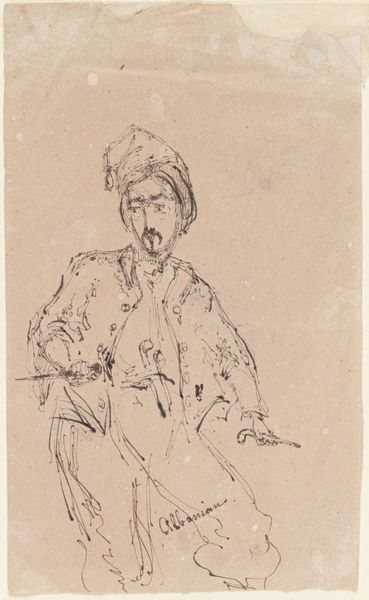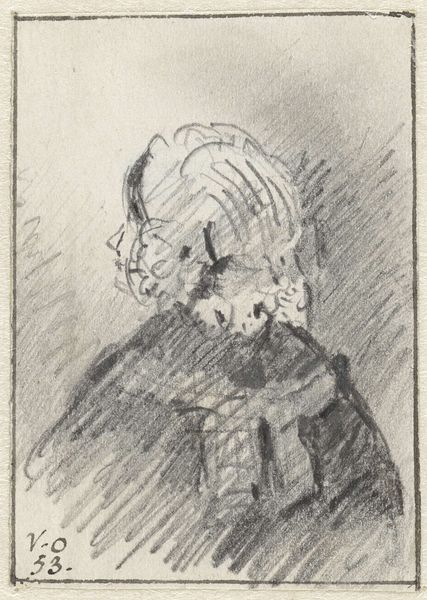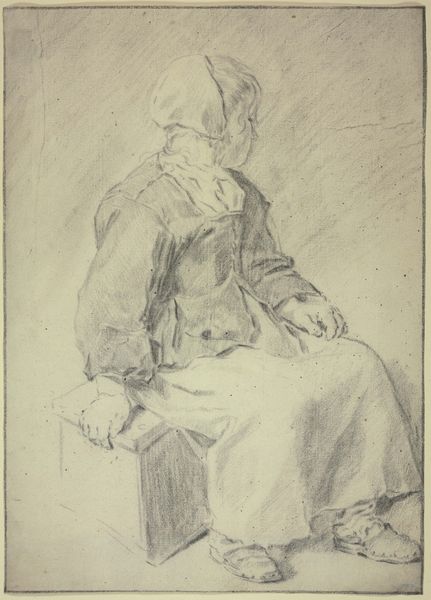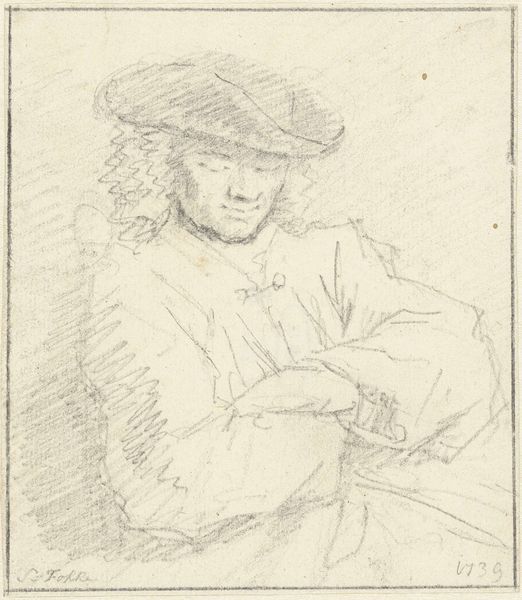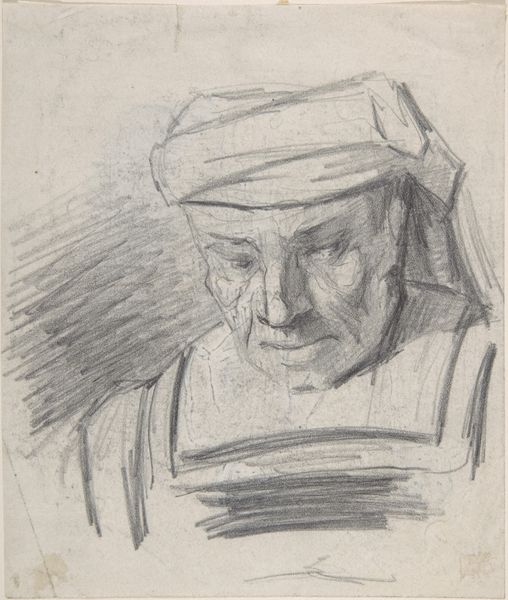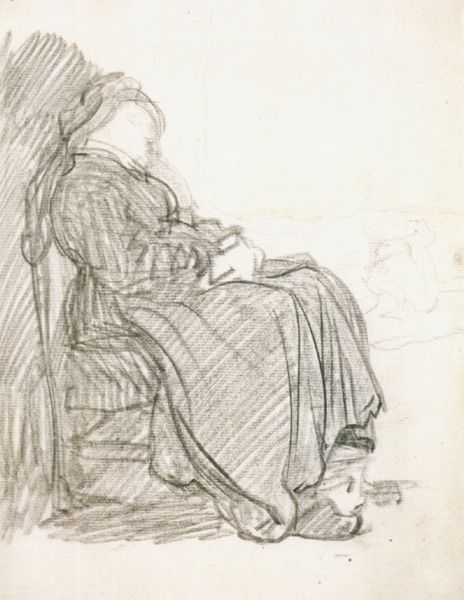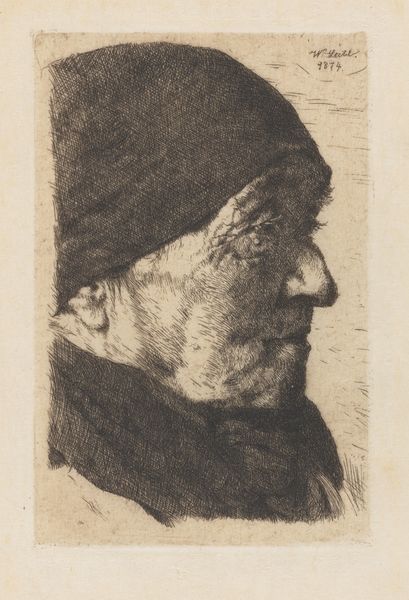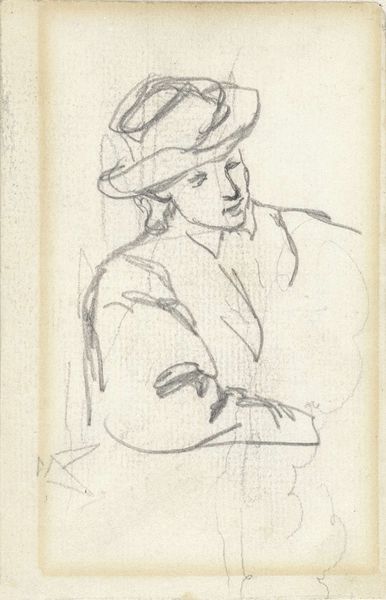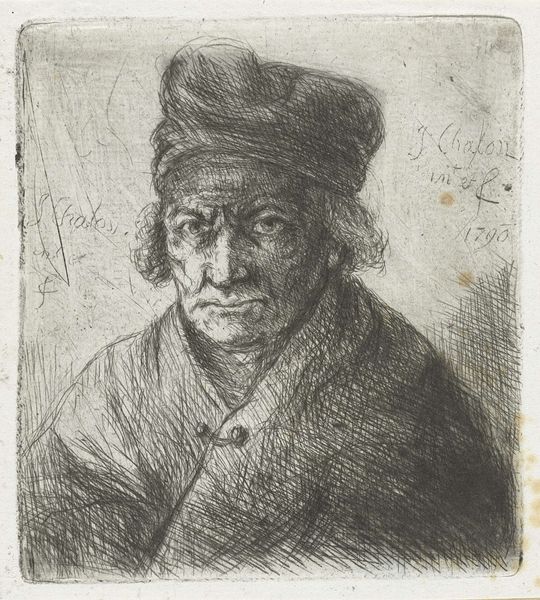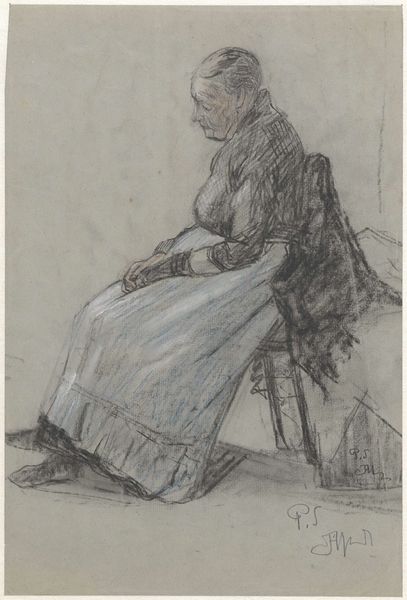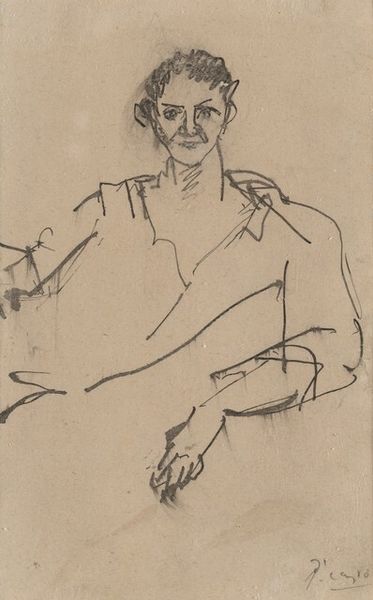
drawing, pencil, charcoal
#
portrait
#
drawing
#
pencil sketch
#
pencil
#
charcoal
Dimensions: height 180 mm, width 137 mm
Copyright: Rijks Museum: Open Domain
Curator: Oh, what a beautiful study. My eye is immediately drawn to the striking contrast and sense of depth despite its sketch-like quality. It has a melancholic, yet thoughtful presence. Editor: Indeed. This is Jean-Baptiste Carpeaux’s, "Sketch after a Self-Portrait by Rembrandt," dating from somewhere between 1837 and 1875. It is currently held at the Rijksmuseum, a place with a rich history. Curator: Carpeaux, fascinated by Rembrandt! He seems to be grappling with the Dutchman’s soul, doesn’t he? Almost like he is whispering, "Tell me your secrets, master!" Editor: It certainly reveals a lot about artistic influence. We see 19th-century artists frequently engaging with their predecessors, both honoring and reinterpreting the art of the past within their own social context. Curator: I can imagine Carpeaux standing in front of a Rembrandt self-portrait, pencil in hand, completely captivated. Trying to catch the play of light, that masterful chiaroscuro, to get into the very heart of Rembrandt's being. Editor: These studies often served a pedagogical purpose. By copying old masters, artists could absorb historical styles, master technical skills, and connect themselves to the canon. The white highlights really illuminate that effort, and you see how much of the image depends on stark, strong shading. Curator: What I adore about these studies is that it is not about perfection but the sheer act of observing, processing, and then translating. A kind of artistic meditation. Editor: Absolutely. Think about what copying Rembrandt in particular could have represented. Rembrandt was such a central figure for the Romantics, who valued authenticity and emotional expression. Curator: Thank you, Carpeaux, for sharing your quiet moment of admiration. It almost inspires me to grab a pencil and follow your example, connect with another master, and steal some of their creative energy. Editor: Well, and consider how museums enable these connections across time. What do you think it means that we continue to place such value on observing art from previous eras?
Comments
No comments
Be the first to comment and join the conversation on the ultimate creative platform.

